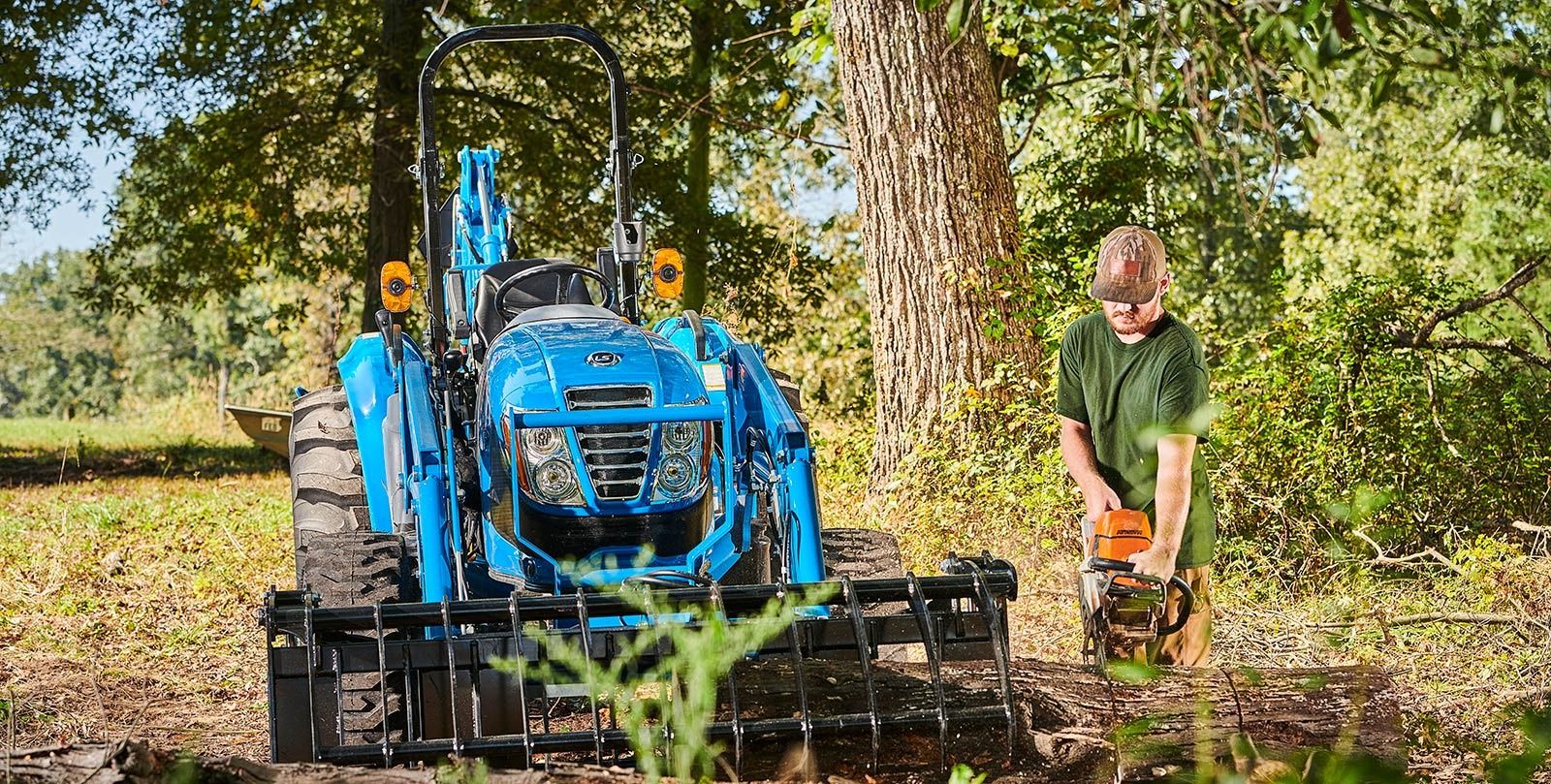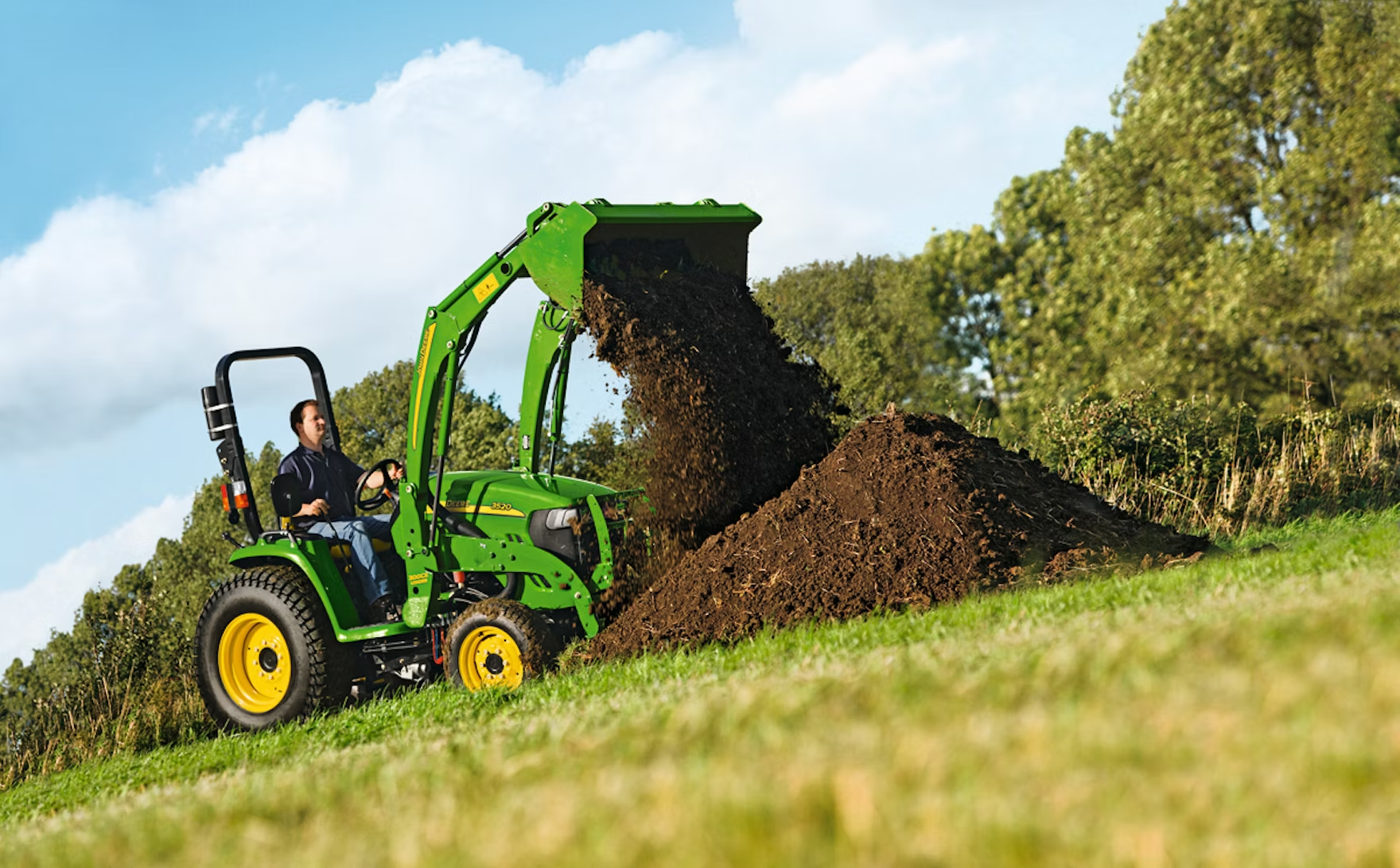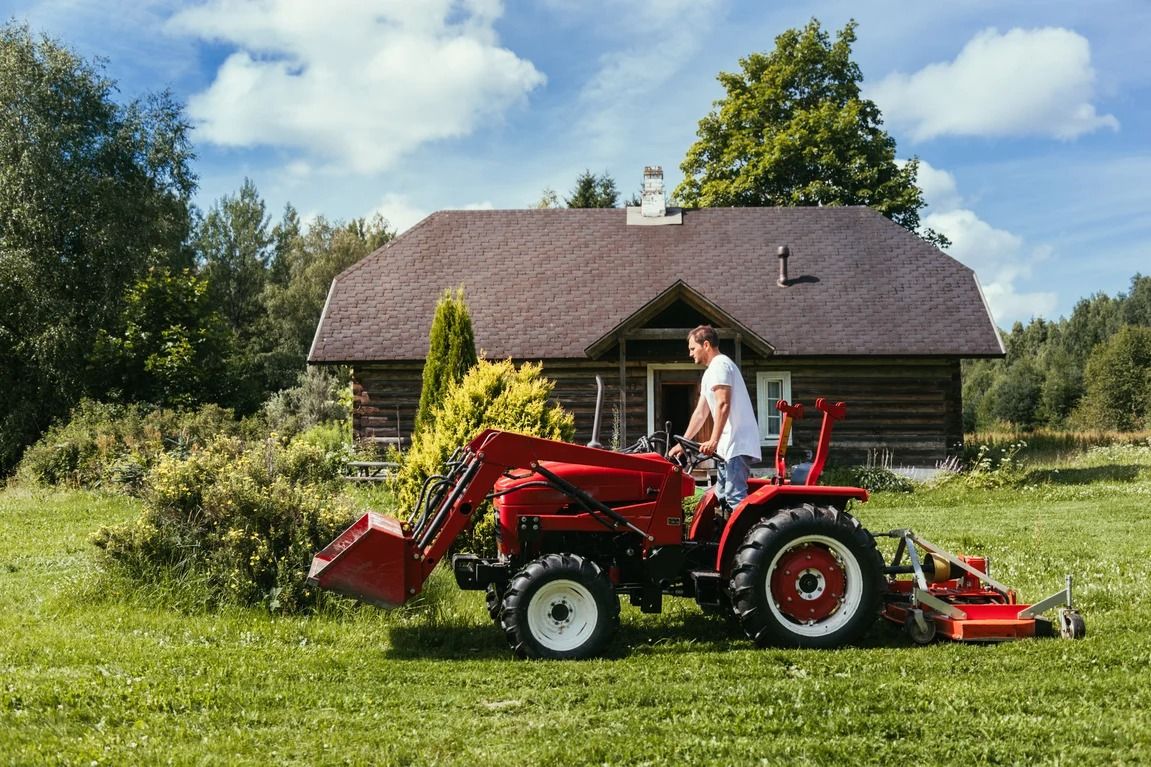Tractor Implements Explained – A Straightforward Guide for Landowners & Contractors
Tractor implements can make or break your productivity — but most buyers either overbuy or underuse them.
“The average tractor owner only uses 2 out of the 6 implements they purchase.”
That’s wasted time, space, and money.
Whether you're managing a homestead, running a landscaping crew, or clearing acreage for development, choosing the right implements starts with understanding what each one does, when it’s useful, and when it’s not.
In this guide, you’ll get
- A no-fluff breakdown of the most common tractor implements
- What each tool is good for (and when it's overkill)
- Tips to choose smarter and spend wiser
We’ve built this with landowners, contractors, and small farm operators in mind — straight answers, no guesswork.
Shop Attachments & AccessoriesWhat Are Tractor Implements?
Tractor implements are tools that attach to your tractor to perform specific tasks — like digging, mowing, hauling, tilling, or lifting.
From clearing overgrowth to prepping a construction site, the right implement turns your tractor into a year-round workhorse.
Implements vs. Attachments vs. Accessories
- Implements – Core tools powered by or pulled behind the tractor (e.g., box blade, post hole digger)
- Attachments – Add-ons to existing implements or the tractor itself (e.g., skid shoes, forks)
- Accessories – Smaller upgrades like quick hitches, LED lights, or PTO shaft guards
While these terms often get used interchangeably, knowing the difference helps when buying or troubleshooting equipment.
Three Main Categories of Implements
1. Front-Mounted
- Installed on the front loader arms
- Great for lifting, pushing, and grabbing (e.g., buckets, grapples, pallet forks)
2. Rear-Mounted
- Connected to the 3-point hitch
- Common for grading, plowing, raking, or tilling (e.g., box blade, rear blade, rotary tiller)
3. PTO-Driven (Power Take-Off)
- Uses engine power to spin or drive internal parts
Needed for tools like rotary cutters, post hole diggers, and spreaders
Need Help Matching Implements?
Most Popular Implements – And What They’re For
When you’re outfitting a tractor, some implements earn their keep over and over. Others might collect dust if you're not using them regularly. Here’s a breakdown of the most versatile tools — and when you might not need them.
Rotary Cutter / Brush Hog
- Best For: Clearing overgrowth, tall grass, small saplings, and brush
- Use-Case: Ideal for large rural properties, trails, roadside maintenance, or overgrown fields
- When It’s Overkill: If you're only maintaining manicured lawns or already use a finish mower
Box Blade
- Best For: Leveling soil, spreading gravel, backfilling trenches, or driveway grading
- Use-Case: Popular among contractors and landowners maintaining access roads or preparing build sites
- When It’s Overkill: If you only use your tractor for mowing or don’t need grading functionality
Post Hole Digger
- Best For: Digging uniform holes for fencing, signposts, trees, and deck supports
- Use-Case: A must-have for fence contractors, rural properties, or small orchards
- When It’s Overkill: If you're only setting a handful of posts once every few years
Landscape Rake
- Best For: Clearing leaves, gravel, sticks, and loose material over wide areas
- Use-Case: Useful on driveways, construction sites, or after storm cleanup
- When It’s Overkill: For heavily compacted soil or projects where a box blade already covers the job
Rotary Tiller
- Best For: Preparing soil for gardens, food plots, or small-scale farming
- Use-Case: Breaks up compacted ground, mixes compost, and preps seedbeds
- When It’s Overkill: On heavily rocky terrain or if you're already using a disc harrow
Pro Tip: Start with 1–2 core implements based on what you do most — you can always add more later as needs grow.
See Our Compatible Parts & UpgradesImplements That Are Worth Skipping (For Most Buyers)
Not every implement is worth the space or spend. Depending on your work and region, some tools might sit unused for years. Here are a few that often look appealing—but rarely deliver real value unless you're in a very specific niche.
Hay Rake
Unless you’re actively baling hay or running livestock operations, a hay rake is unnecessary. It takes up storage space and rarely sees use on small farms or contractor sites.
Snow Blower
A PTO-driven snow blower is overkill for most regions. If you don't regularly deal with deep drifts or multiple months of snow cover, a front blade or loader bucket is usually sufficient.
Rear Discharge Mower
While rear discharge mowers have some advantages in commercial lawn care, they often overlap with tools you already have—like a finish mower or rotary cutter—especially on open land.
Overlapping Functionality
Be cautious when buying implements that serve similar purposes. For example, a landscape rake and rear blade can both handle light grading and debris. Pick one based on your primary need, not aesthetics or sales hype.
How to Choose the Right Implement for Your Job
Before investing in any attachment, take a few moments to match it to your actual work, tractor size, and resale goals.
Match to Tractor Horsepower and Weight Class
Implements that are too large can overload your hydraulics or drag down performance. Check width, weight, and PTO compatibility before buying.
Consider Terrain and Frequency of Use
Working hilly, wet, or rocky ground? You’ll want tougher components and simpler controls. If a job comes up only once a year, consider rental options.
Think Long-Term Resale
Ask yourself: will I still be using this in two to five years? Will it hold value if I want to sell it later? Tools that are well-known and easy to maintain usually resell better.
Pro Tip: Renting before buying can save thousands—and show you what tools actually match your workflow.
Talk to Our TeamMaintenance Tips for Long-Lasting Implements
Your implements take a beating. Whether you're moving soil, cutting thick brush, or digging into rocky terrain, regular upkeep goes a long way toward avoiding downtime and costly repairs.
Store Out of the Elements
Keep implements in a shed, barn, or under a tarp. Exposure to rain, sun, and freezing temperatures shortens the lifespan of steel components, rubber seals, and hydraulic lines.
Grease Moving Parts After Every Use
Apply high-temp grease to all pivot points, bearings, and shafts after every job. This keeps parts moving smoothly and prevents premature wear from dirt and moisture.
Sharpen Blades Regularly
For implements like brush hogs and tillers, sharp blades make cleaner cuts, reduce strain on the engine, and improve efficiency. Inspect and sharpen every 20–30 hours of use.
Check for Structural Damage
Inspect welds, pins, and mounting brackets for cracks, fatigue, or excessive wear. Keep a few shear bolts on hand in case of sudden impact or overload.
Where to Buy Implements (New vs. Used)
Buying the right implement also means buying it from the right source. Both new and used options have their place—if you know what to look for.
Buying Used
Used implements can save you thousands if inspected properly. Always check:
- PTO shaft condition and guard integrity
- Welds and frame for cracks or bad repairs
- Pins, bushings, and attachment points for slop or stretch
- Blade or tine condition
Ask for service history when possible, and avoid units that were left outside uncovered.
Buying New
If you're buying new, prioritize
- Warranty coverage (especially on gearboxes or hydraulic parts)
- Availability of replacement parts
- Local dealer or manufacturer support
- Compatibility with your tractor (especially for PTO-driven tools)
Buy Smart, Use Smarter
Choosing the right tractor implements isn’t about collecting tools — it’s about solving real problems on your land or job site.
By understanding what each implement does, how often you’ll use it, and how it fits your tractor, you’ll avoid wasting money and gain equipment you’ll actually rely on. Skip the extras. Invest in the essentials.
Stick to the implements that match your workflow, terrain, and long-term needs. And when in doubt, test before you buy or talk to someone who works with this gear every day.
Have questions or need help deciding what fits your setup?
Talk to Our Equipment Team



